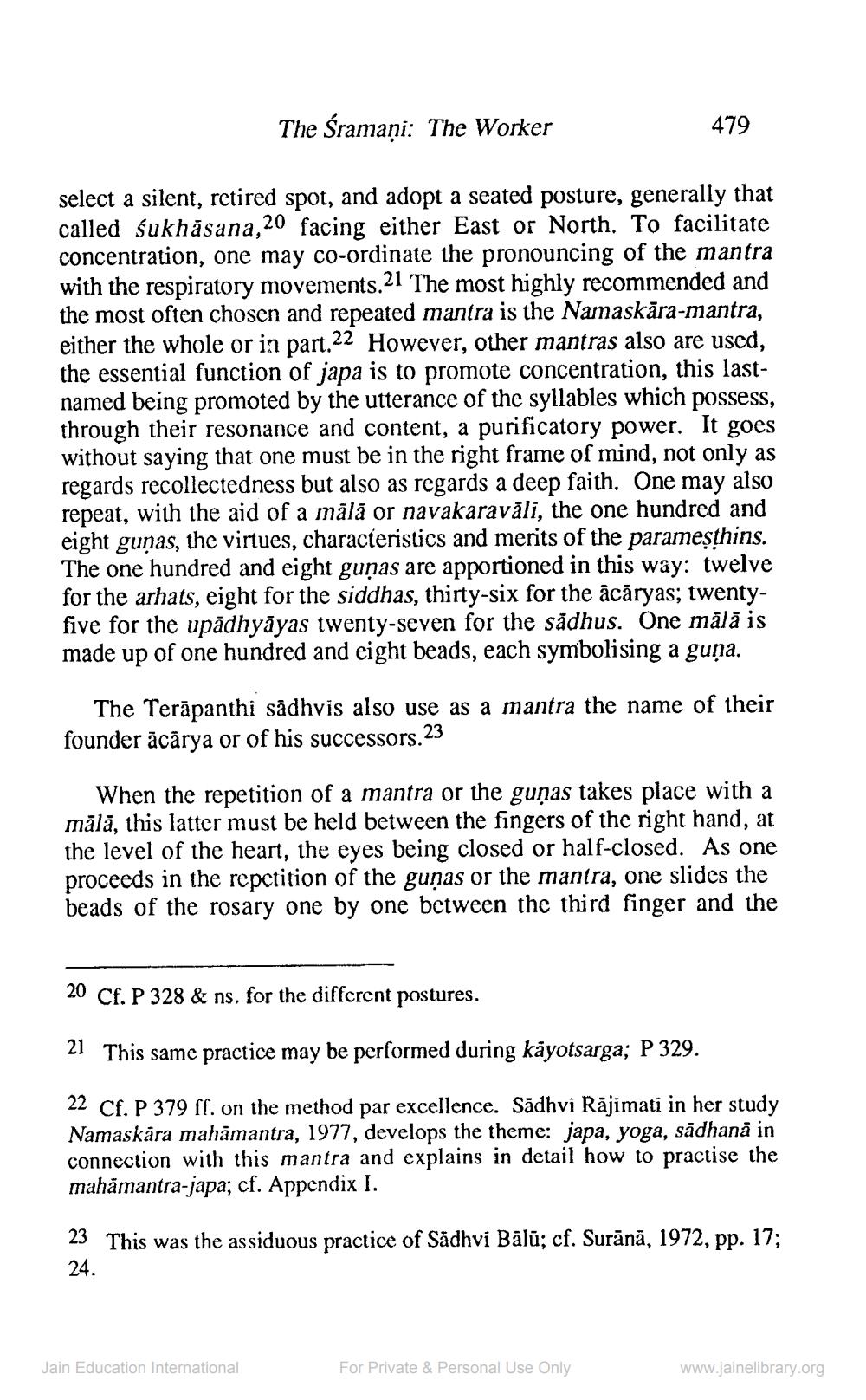________________
The Śramaņi: The Worker
479
select a silent, retired spot, and adopt a seated posture, generally that called śukhasana, 20 facing either East or North. To facilitate concentration, one may co-ordinate the pronouncing of the mantra with the respiratory movements.21 The most highly recommended and the most often chosen and repeated mantra is the Namaskāra-mantra, either the whole or in part.22 However, other mantras also are used, the essential function of japa is to promote concentration, this lastnamed being promoted by the utterance of the syllables which possess, through their resonance and content, a purificatory power. It goes without saying that one must be in the right frame of mind, not only as regards recollectedness but also as regards a deep faith. One may also repeat, with the aid of a mālā or navakaravāli, the one hundred and eight guņas, the virtues, characteristics and merits of the parameșthins. The one hundred and eight guņas are apportioned in this way: twelve for the arhats, eight for the siddhas, thirty-six for the ācāryas; twentyfive for the upādhyāyas twenty-seven for the sădhus. One mālā is made up of one hundred and eight beads, each symbolising a guņa.
The Terāpanthi sādhvis also use as a mantra the name of their founder ācārya or of his successors.23
When the repetition of a mantra or the guņas takes place with a mālā, this latter must be held between the fingers of the right hand, at the level of the heart, the eyes being closed or half-closed. As one proceeds in the repetition of the gunas or the mantra, one slides the beads of the rosary one by one between the third finger and the
20 Cf. P 328 & ns. for the different postures.
21 This same practice may be performed during kāyotsarga; P 329.
22 Cf. P 379 ff. on the method par excellence. Sadhvi Rājimati in her study Namaskara mahāmantra, 1977, develops the theme: japa, yoga, sādhana in connection with this mantra and explains in detail how to practise the mahamantra-japa; cf. Appendix I.
23 This was the assiduous practice of Sadhvi Bālū; cf. Surānā, 1972, pp. 17; 24.
Jain Education International
For Private & Personal Use Only
www.jainelibrary.org




